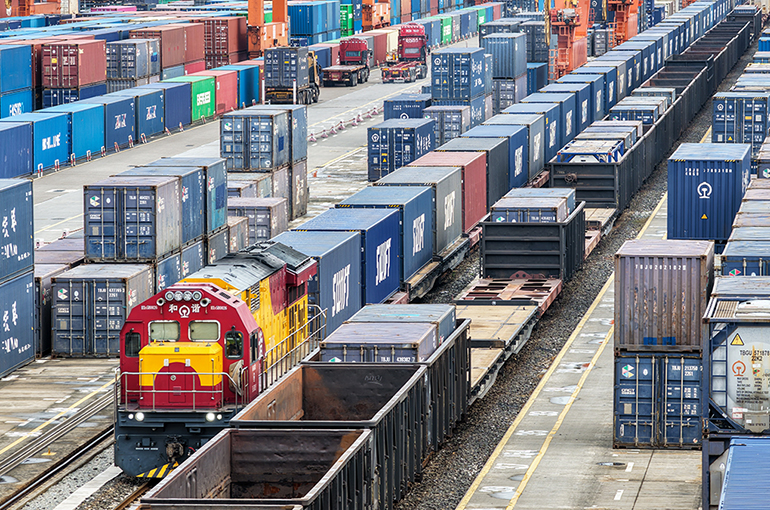 China-Europe Freight Trains Still Stuck in Bottleneck After Poland Reopens Border With Belarus
China-Europe Freight Trains Still Stuck in Bottleneck After Poland Reopens Border With Belarus(Yicai) Sept. 30 -- Poland reopened its border with Belarus on Sept. 25, restoring China-Europe rail freight trade after a 13-day halt, but the repercussions for shipping services are still being felt and experts say the incident highlights the urgent need for alternative routes.
Normal operations will not resume until after China's National Day holiday that ends on Oct. 8, New Silk Road Intermodal, a logistics provider that mainly runs trains along the China-Europe Railway Express, said on WeChat.
The China-Europe Railway Express runs through Russia and Brest, reaching the Polish logistics hub of Malaszewicze before connecting to more than 220 cities in 26 European countries.
More than 130 Chinese freight trains were stranded at Brest last week, and it will take about a week to clear the backlog, Sichuan-based New Silk Road said.
Poland closed the border crossings on Sept. 12 due to joint Russia-Belarus military exercises near its border, followed by a drone incursion. As a result, the transit time for trains from Chinese cities to Malaszewicze climbed to 20 days from two to four, while those trains running to Duisburg and Hamburg in Germany are taking 25 to 28 days, about five to six days longer than usual.
The incident has sounded an alarm and highlighted the urgent need to build alternative rail freight routes, said Hao Panfeng, deputy secretary-general of the China Container Industry Association. When logistics systems become tightly integrated with supply chains, multiple routes must be in place to mitigate unpredictable risks, Hao pointed out.
The China-Europe Railway Express has four main trunks: eastern via Manzhouli, northern via Erenhot, central via Alashankou to Poland, and southern via Khorgos. The central route accounts for around 90 percent of all freight shipments, but the risk of over-reliance has emerged following the Russia-Ukraine conflict.
More and more clients are paying attention to the southern leg, the northern sea-rail transport link, and the Arctic route, with train operators also moving faster to open new routes, Hao noted. For instance, the sea-rail route from Chengdu to Hamburg via Saint Petersburg, which can be completed in about 18 days, is now being run more frequently, Hao said, adding that what were once emergency alternatives are inching toward regular use.In July, the China–Europe (Chengdu–Chongqing) regular express via the southern corridor entered frequent service.
The China-Europe Railway Express Chengdu-Chongqing started regular services in July, reducing the transit time from China to Türkiye via the middle route to 15 days, according to Türkiye’s deputy transport minister. The goal is to shorten the time from Alashankou to Kars to 10 days.
The southern route is more expensive and the shipping time is longer, a representative of a freight train operator told Yicai. After the Poland-Belarus border crossing closure, the platform is closely monitoring the market response and will decide whether to increase the frequency of freight trains taking this route based on its findings, the person said.
Editor: Martin Kadiev